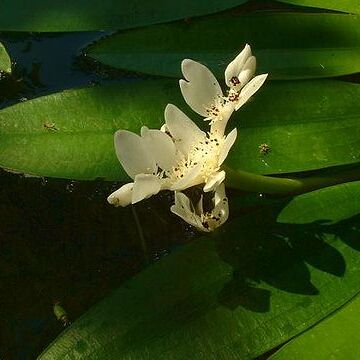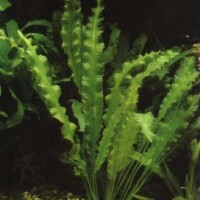Freshwater aquatic herbs, bisexual, monoecious ordioecious, perennial, with tuber or rhizome, stolon or corm and erect stem,with short lactifers and raised glands or punctae. Leaves floating, or floatingand submerged, or all submerged, alternate, simple, petiolate or sessile,sheathing at base, often containing hydropoten (localised regions of flat cellsappearing as blotches); blade with parallel venation, the main veins connectedby cross veins; submerged blades usually with lacunae. Inflorescence submerged,floating or emergent, subtended by caducous or persistent spathe, pedunculate,spicate, branched or single. Flowers zygomorphic, sessile, perfect orimperfect. Perianth in 1 whorl of 1–6 parts or absent, persistent, white topink, yellow, green, blue or violet; stamens (1–) 6–18 (–50), 2-loculed,dehiscing by longitudinal slits. Carpels separate, superior, sessile, (0–) 2–6(–9), with basal placentation. Fruiting carpel a follicle, with terminal orlateral, curved or straight beak. Seeds with single or double testa, lackingendosperm; embryo straight.
Herbs, perennial, rhizomatous, caulescent; turions absent. Leaves alternate, floating [submersed], petiolate [sessile]; sheath not persisting longer than blade, not leaving circular scar when shed, not ligulate, not auriculate; blade ovate to narrowly lanceolate [linear]; intravaginal squamules (i.e., minute appressed, planate trichomes attached at basal edge) scales, more than 2. Inflorescences terminal, spikes, subtended by spathe, pedunculate; peduncle following fertilization not elongating, not spiraling. Flowers bisexual [unisexual]; subtending bracts absent; perianth present [absent]; tepals 1[--6]; stamens 6--18[--50] in 2--3[--4] series, not epitepalous; anthers distinct, dehiscing longitudinally; pollen ellipsoid; pistils 2--6[--9], distinct, not stipitate; ovules basal-marginal, anatropous. Fruits follicles. Seeds 4; embryo straight.
Herbs, perennial, freshwater aquatic. Rhizome tuberous, with fibrous roots. Leaves submerged and/or floating, basal, long petiolate, broadly elliptic to linear, with few primary veins and numerous transverse secondary veins, sheathed at base. Inflorescence usually a simple or 2-forked terminal spike; spathe present, but usually very early caducous. Flowers hermaphroditic or unisexual. Perianth segments 1-3 or rarely absent, white, yellow, mauve, or bluish violet, often petaloid, persistent. Stamens 6 to many; filaments elongated, free, filiform or flattened; anthers extrorse, 2-celled, opening by longitudinal slits. Carpels 3-6(-8), free or slightly united near base; ovary superior; style short; ovules 2-8 per carpel. Fruit a whorl of follicles. Seeds without endosperm; embryo straight.
Leaves long-petiolate, or sessile, oblong-elliptic to linear, with few principal parallel nerves and numerous transverse secondary nerves
Flowers hermaphrodite or rarely unisexual, spicate-scapose, spike simple or usually 2-(rarely up to 8-) forked, without bracts
Perianth-segments 1-3, or absent, sometimes petaloid and bract-like, equal or unequal, usually persistent
Fresh-water aquatic herbs with submerged or floating leaves; rhizome tuberous, with fibrous roots
Stamens 6 or more, free, hypogynous, persistent; anthers extrorse, 2-locular
Carpels free, 3-6, sessile; style short; ovules 2 or more, ascending
Fruits opening on the adaxial side
Seeds without endosperm


